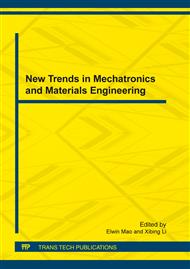p.565
p.570
p.576
p.583
p.587
p.592
p.597
p.602
p.607
Performance Evaluation of Active Control Systems in Diffuse Fields
Abstract:
In this paper design of quiet zones in broadband diffuse fields has been present by using the method of acoustic pressure minimization over various spaces and frequencies. The technique is squared acoustic pressure minimization. The theory and simulations of pressure minimization over space and frequency using one-channel and two-channel systems are presented. The work presented in this paper focus on diffuse primary fields with one and two secondary sources. It is shown that larger zones of quiet are obtained using two secondary sources, with better control over the shape and location of the quiet zones. The main contributions of the paper are that a design method of active systems to generate larger zones of quiet in broadband diffuse fields is proposed and the performance of the active systems is analyzed.
Info:
Periodical:
Pages:
587-591
Citation:
Online since:
January 2012
Authors:
Price:
Сopyright:
© 2012 Trans Tech Publications Ltd. All Rights Reserved
Share:
Citation:


